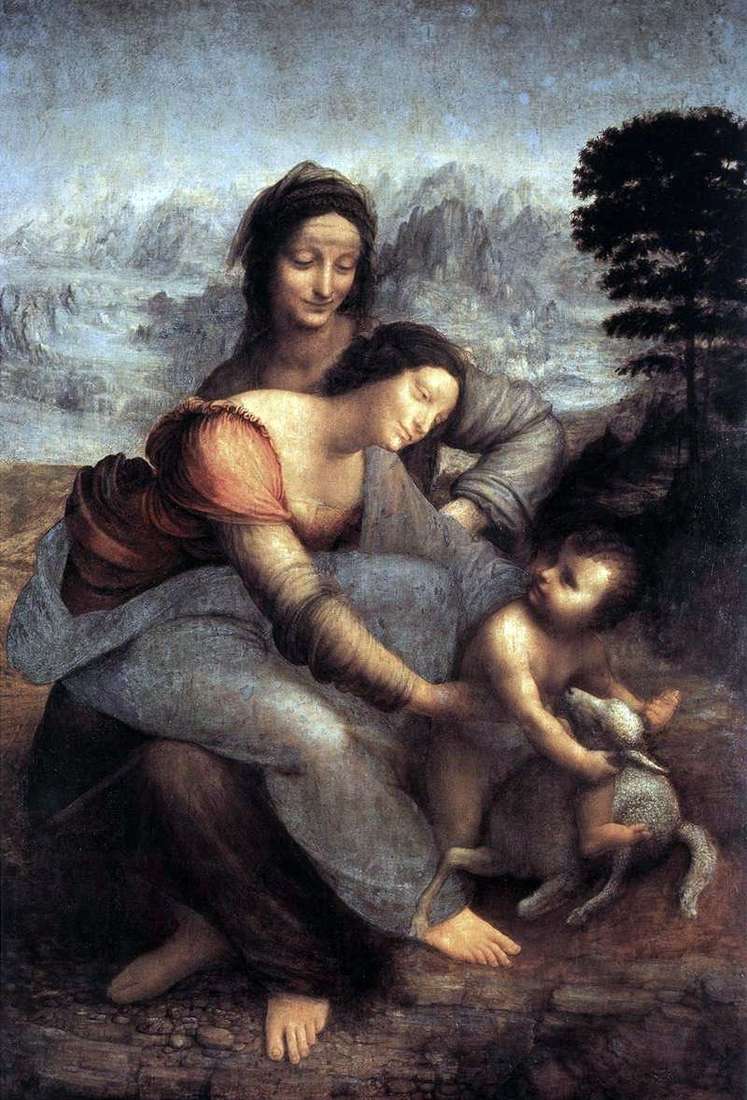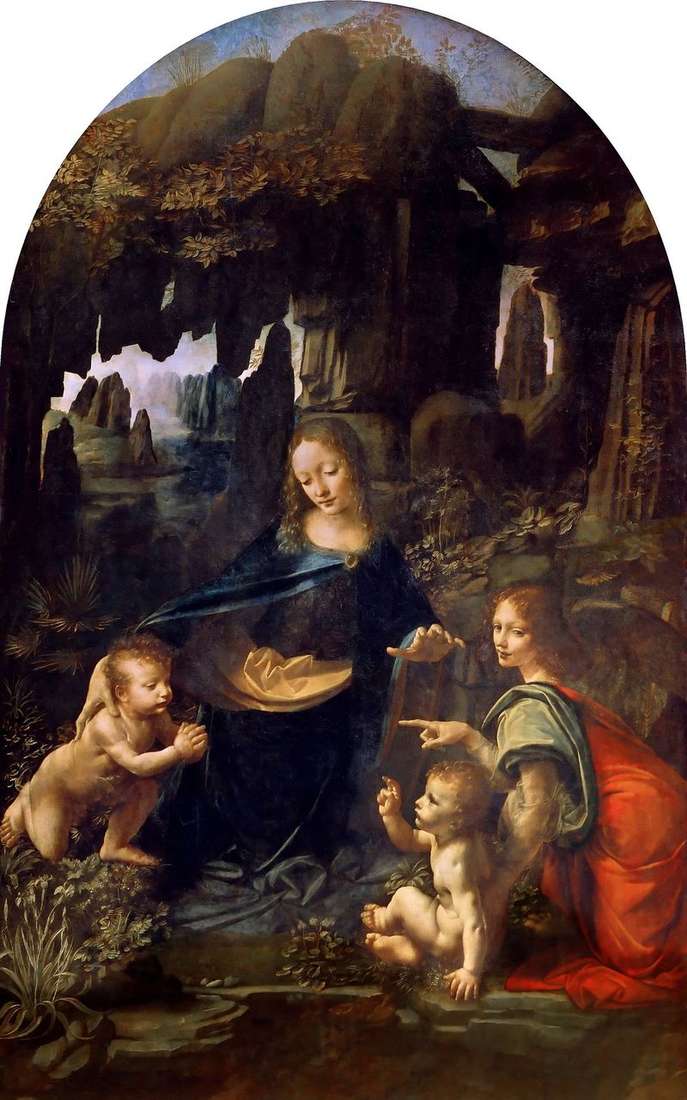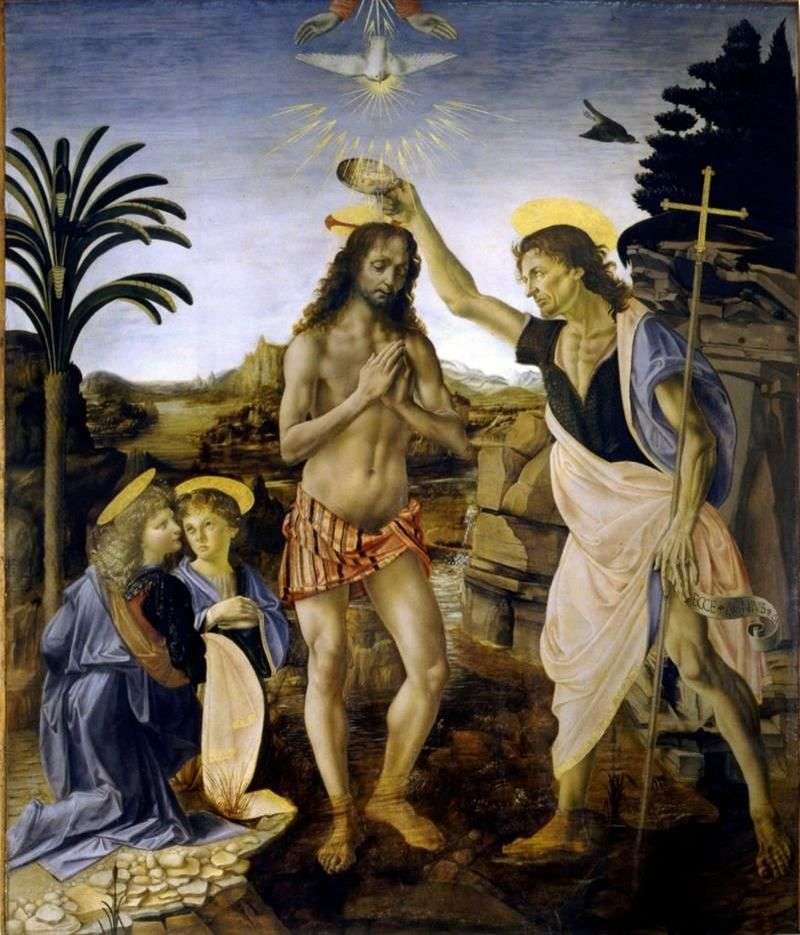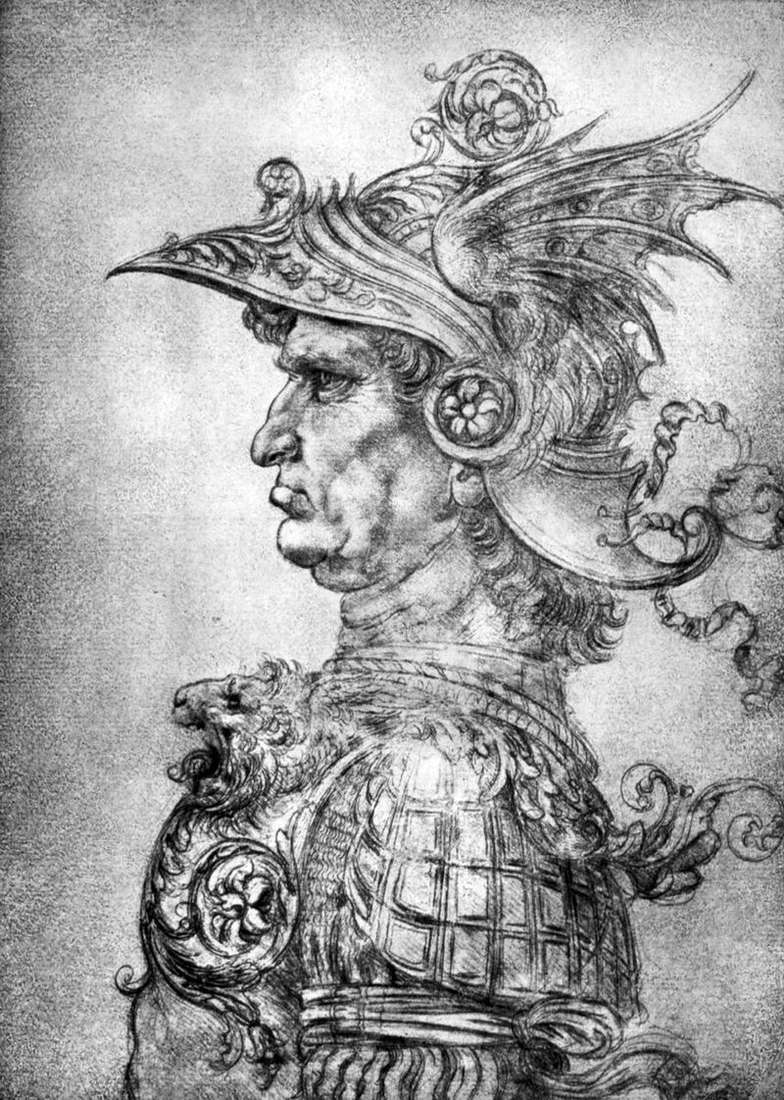
Having begun work on the painting, and not having finished it, Leonardo returned to her to the end of life. According to Giorgio Vasari, after returning to his hometown, he received an order for painting the altar for the church of Santissima Annunziata in Florence.
Working in the monastery, at the church, he first performed a predictive drawing. There are documents that the drawing was shown for two days and aroused admiration. Before us is a scene full of movement: Maria – on her mother’s lap, St. Anne. A one-year-old child breaks free from the hands of his mother. He turned away from her, playing with a lamb.
Almost standing up from the knees of St. Anna, Maria tries to delay the child. Perhaps Anna represents the Church, which does not want anything to stand in the way of the Passion of Christ. There are some elements similar to the “Burlington House Cardboard”. It is especially surprising that in the faces of Mary and her mother, there is not much difference in age, as in the paintings of other artists.
In addition, it seems that the figures of women merge into one, even the infant is part of it. All this emphasizes the close relationship between Anna, Mary and Christ, but the location of each one indicates his role in this family. In addition to the wealth of movements, the painting is striking with a huge landscape, occupying a third of the picture, this is characteristic of the work of Leonardo da Vinci. High mountains and valleys, even lowlands, rise above the group. Nature is the main thing! The landscape can also be interpreted as symbolism: a barren, sun-scorched earth, a bright light, can be read as a symbol of Mary asking for a child.
 Saint Anna and Mary with the Infant Christ by Leonardo Da Vinci
Saint Anna and Mary with the Infant Christ by Leonardo Da Vinci Madonna with the Child and Saint Anna by Leonardo da Vinci
Madonna with the Child and Saint Anna by Leonardo da Vinci The Virgin Mary in the grotto by Leonardo da Vinci
The Virgin Mary in the grotto by Leonardo da Vinci Madonna and Child, Anna and John by Leonardo da Vinci
Madonna and Child, Anna and John by Leonardo da Vinci Madonna with a carnation by Leonardo Da Vinci
Madonna with a carnation by Leonardo Da Vinci Madonna with spinning wheel by Leonardo Da Vinci
Madonna with spinning wheel by Leonardo Da Vinci The Baptism of Christ by Leonardo da Vinci
The Baptism of Christ by Leonardo da Vinci Warrior in helmet and armor by Leonardo da Vinci
Warrior in helmet and armor by Leonardo da Vinci